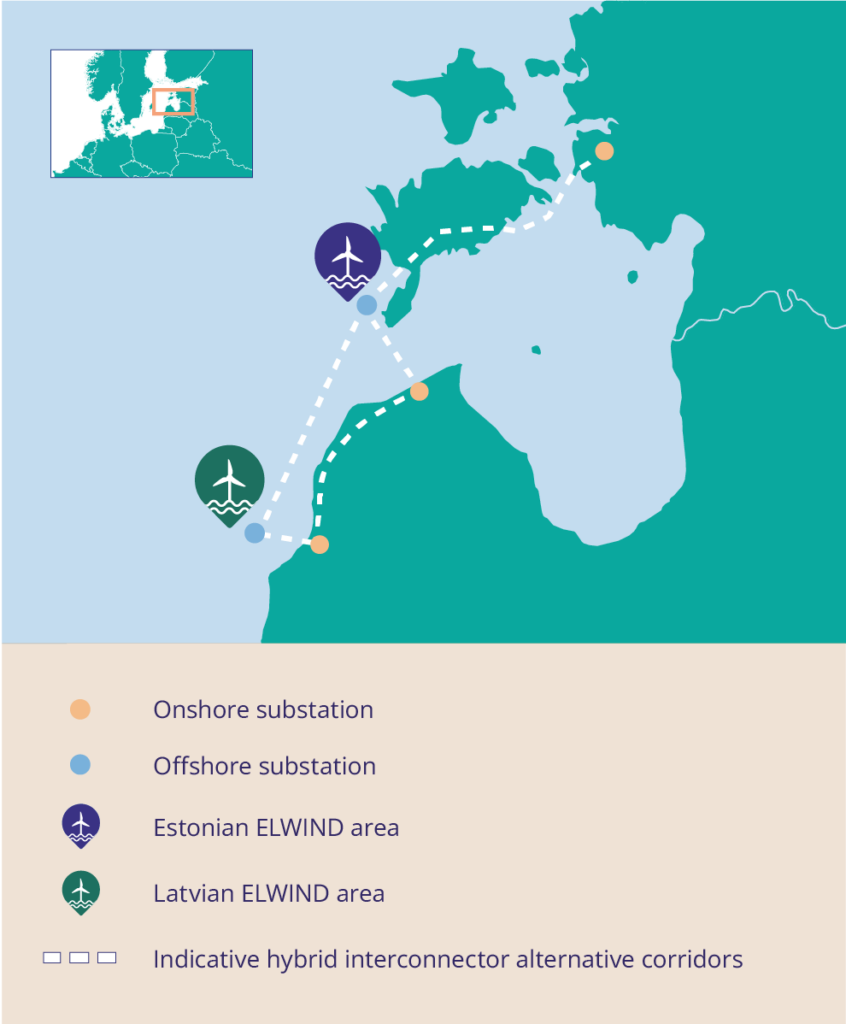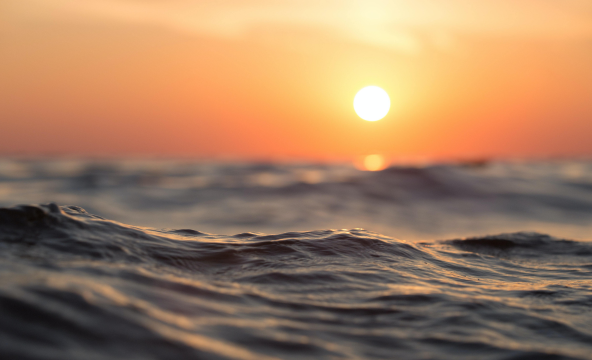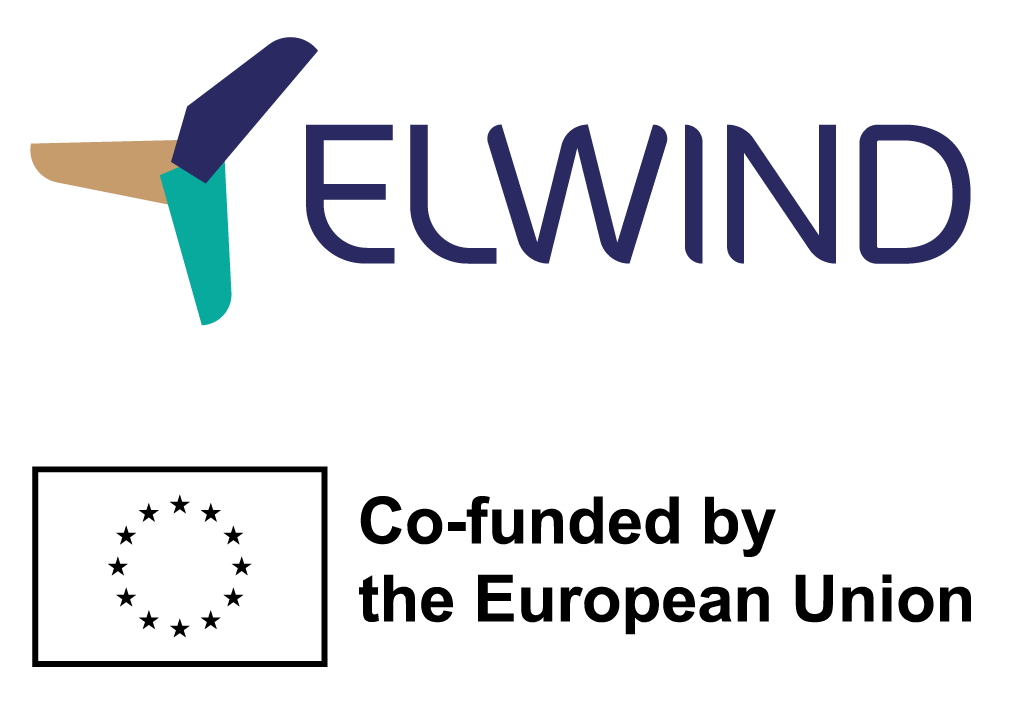Home > ELWIND
ELWIND
ELWIND is a joint Estonian-Latvian state-run cross-border offshore wind project in the Baltic Sea.
It is an ambitious, environmentally friendly renewable energy project that will provide for increased energy independence and security, for more affordable energy prices, contribute to reducing costs for households and businesses, and also to creating new business opportunities for the value chain. The transition to renewable energy creates new prospects for growth and contributes to our common prosperity.
Energy production needs a new approach, both for environmental and security reasons. Offshore wind energy is an environmentally and human-friendly way to produce green, affordable energy and to increase energy independence.

ELWIND approach
ELWIND is being launched with the aim to strengthen regional energy market by investing into offshore wind electricity production and hybrid interconnection between Estonia and Latvia
The project will help to increase the overall regional and European energy autonomy by contributing to the integrated and synchronized European electricity market.
With ELWIND the states organize the necessary preparatory work in the form of planning, studies, and permitting for the offshore areas. The permits and conditions for connecting to the grid will be auctioned out. This way, the states can offer greater certainty to the private developers that the wind parks can be built on indicated areas, as several risks have already been mitigated.



ELWIND is already well known outside Estonia and Latvia, both amongst the business communities and relevant EU stakeholders. ELWIND is being seen as an example of a pioneering and outstanding cross-border cooperation between two EU member states and by showing full commitment of the neighbouring countries to the renewables and offshore wind energy in particular.
Why we need ELWIND
ELWIND will help to fill a gap in large scale regional renewable electricity production and contribute into better functioning of an open electricity market.
A project like ELWIND is now even more important than before. The new geopolitical and energy market reality, the urgency of climate change, and the Russian war against Ukraine require the EU to drastically accelerate the green energy transition and increase Europe’s energy independence from unreliable suppliers and fossil fuels faster. For Estonia and Latvia, local competitive and green energy production has become a matter of national security more than ever.
The objective on the offshore wind energy is to develop the full potential of Europe´s offshore wind energy. The revised EU Renewable Energy Directive that entered into force on 20.11.2023, sets an overall renewable energy target of at least 42,5% by 2030, aiming at 45%. The EU Strategy on Offshore Renewable Energy estimates, that the objective to have an installed capacity of at least 60GW of offshore wind energy by 2030, with a view to reach 300GW by 2050, is realistic and achievable. The strategy emphasizes cross-border cooperation and the importance of enhancing maritime spatial planning for a successful large-scale deployment of offshore renewable energy.
On August 30, 2022, eight European Union countries bordering the Baltic Sea signed the Marienborg declaration committing to increase the offshore wind power generation capacity sevenfold – to 20 gigawatts by 2030 – in order to decrease dependency on Russian energy. The declaration recognizes the substantial potential for the offshore wind power in the Baltic Sea basin, reaching up to 93 GW. Among other issues the aim is also to explore joint cross-border renewable energy projects and identify infrastructure needs to enable the integration of renewable energy needed to ensure security of supply and affordable energy in our homes and businesses, while respecting Member States’ national energy policy priorities and their choices of energy mix.
Estonian and Latvian electricity consumption in total is about 16 TWh in a year and ELWIND will be able to cover about one fifth (3 TWh in a year) of it.
Impacts and gains
ELWIND will contribute to energy security in the region by helping to lower and stabilize electricity prices by making large scale domestic green energy available. It will also boost competitiveness through opening up new sectoral development.
Embracing the offshore wind is an active contribution to the energy transition towards cleaner energy and nature.
The potential of the Baltic Sea maritime area and anticipated real steps to start developing the maritime space as well as the geopolitical imperative have attracted interest from across Europe in terms of investments and business perspectives. Offshore wind energy development will also boost the development of ports in the Baltic States and build up the value chain.
Offshore wind parks provide an opportunity to harness the power of the sea to produce safe, environmentally friendly and affordable energy for the prosperity of the society. The development of offshore wind parks will create new business and learning opportunities as well as new jobs for the coastal regions. With comprehensive planning and effective mitigation measures while developing wind parks, negative the environmental impacts can be minimized.
Overall, wind energy has huge untapped potential in the context of the green transition, more reasonable energy prices and our energy security. It would be wise to take advantage of it. The momentum is now!
The production of offshore wind energy is carbon neutral, but it must be taken into account that the construction, operation and dismantling of offshore wind parks do have an environmental impact. Carbon emissions from offshore wind parks are more than 99% lower compared to fossil fuels over the lifetime of the park, and by introducing additional regulations on supply chains, it is possible to further reduce the carbon emissions associated with offshore wind parks.

Replacing fossil fuel-based electricity production with an 1000MW offshore wind park, would save approximately 3 million tonnes of CO2 equivalent emissions per year. This is about the size of the future ELWIND parks. This CO2 reduction is comparable with the amount of total CO2 emissions from transport sector in Estonia and Latvia each year. Therefore, the amount of electricity generated in ELWIND wind parks would cover the needs to fully electrify the Estonian and Latvian transport sector.

